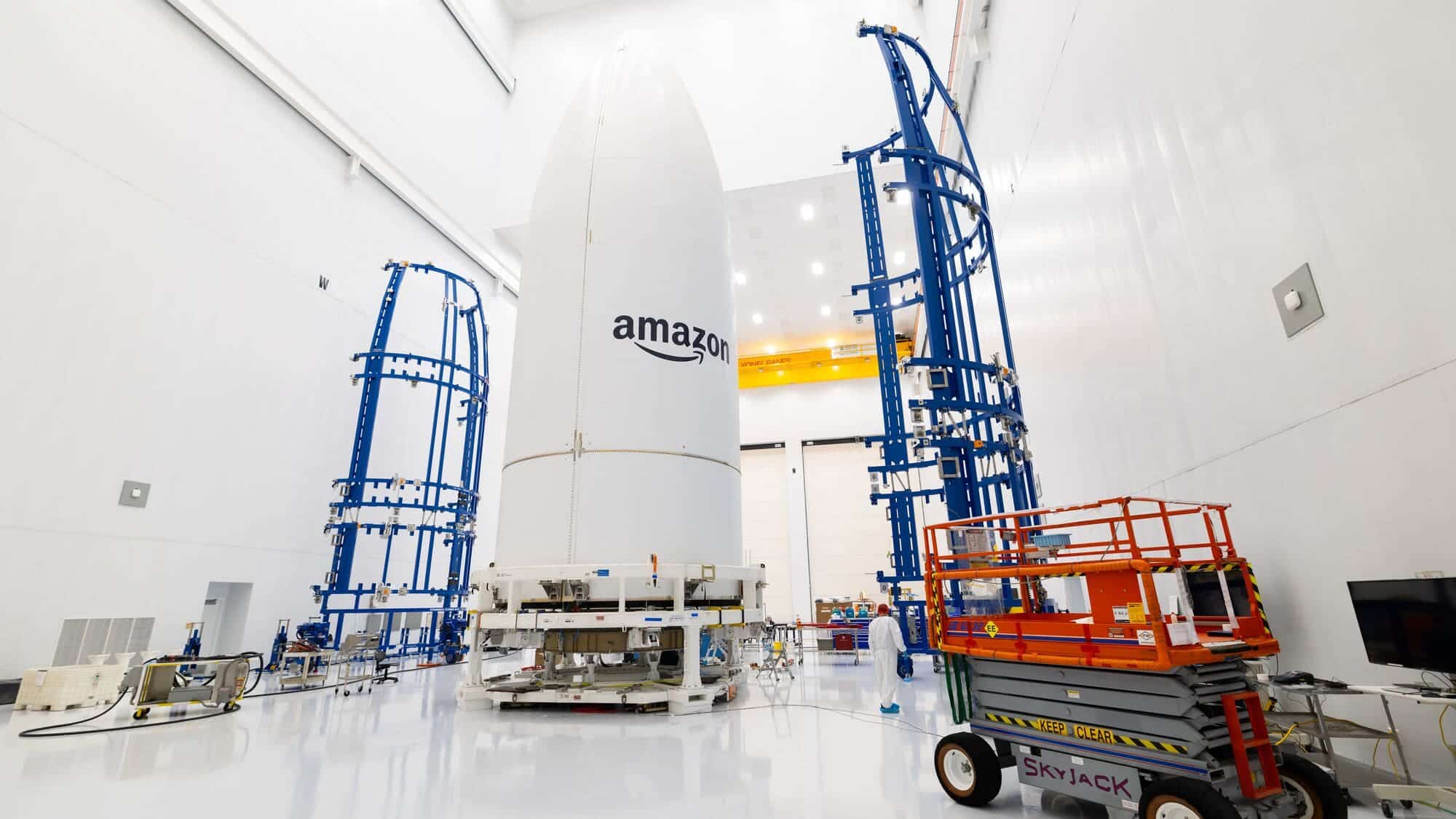The Atlas V rocket from United Launch Alliance will carry into space the first batch of satellites that will make up Amazon’s global satellite internet network.
Amazon has announced that next Wednesday, April 9, no earlier than 6:00 PM (Spanish mainland time), it will launch the first large-scale mission of Project Kuiper, its ambitious initiative to provide high-speed, low-latency internet from space. The launch, designated KA-01 (Kuiper Atlas 1), will take place from Cape Canaveral Space Force Station in Florida, USA, using an Atlas V rocket from United Launch Alliance (ULA), and will include 27 satellites.
Goal: Closing the Global Digital Divide
Amazon’s goal with Project Kuiper is clear: to connect communities around the world that lack reliable access to the internet. The constellation, which will feature more than 3,200 low Earth orbit satellites in its first generation, will enable broadband services anywhere on the planet. According to the company, the first services are expected to begin rolling out by 2025.
“KA-01 is just the first step in a series of launches aimed at creating a robust global network,” explained Rajeev Badyal, Vice President of Project Kuiper. “We have designed some of the most advanced communication satellites ever built, and this first flight will allow us to validate their performance in real-world conditions.”
Cutting-Edge Technology in Orbit
The satellites flying in this mission represent a significant upgrade from the prototypes launched in October 2023. They feature phased array antennas, high-performance processors, electric propulsion systems, inter-satellite optical links, and optimized solar panels. Additionally, they are coated with a dielectric mirror film that disperses reflected sunlight, reducing their visual impact for astronomers.
This will also be the heaviest payload ever launched by an Atlas V rocket, which will be used in its most powerful configuration: with five additional solid rocket boosters and a fairing measuring 23.5 meters tall and 5 meters wide.
An Expanding Constellation
Following the KA-01 launch, Amazon and ULA have scheduled seven more launches with Atlas V and 38 with the new Vulcan Centaur, a more powerful rocket. In addition, there will be more than 30 additional launches with other providers such as Arianespace, Blue Origin, and SpaceX.
The management of the constellation will be handled by Project Kuiper’s 24/7 operations center in Redmond, Washington, once the satellites separate from the rocket and begin activating their systems to ascend to their final operational orbit, located at 630 kilometers altitude. At that height, each satellite will orbit the Earth every 90 minutes at a speed of 27,359 km/h.
Path to Global Connectivity
Amazon’s ultimate goal is to create an end-to-end network that allows data to be transmitted from terrestrial infrastructures to the satellites and from there to user terminals, and vice versa. Once fully deployed, Project Kuiper promises to be a global alternative for millions of people without internet access.
Meanwhile, the company continues to ramp up its production pace and has already begun preparing for the next launch, KA-02, also with an Atlas V from Cape Canaveral.
With Project Kuiper, Amazon positions itself as a significant new player in the space and telecommunications sector, intending to compete with initiatives like SpaceX’s Starlink and actively contribute to closing the global digital divide.

